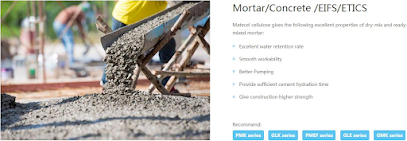Can Concrete Fiber Solutions Revolutionize the Construction Industry?
The construction industry has always been at the forefront of innovation, constantly seeking ways to improve efficiency, durability, and sustainability in building practices. One emerging technology that holds great promise in revolutionizing the industry is concrete fiber solutions. By incorporating various types of fibers into concrete mixtures, these solutions aim to enhance the strength, durability, and versatility of traditional concrete. But can concrete fiber solutions truly transform the construction landscape? In this article, we delve into the potential benefits and challenges associated with this innovative approach.

Enhanced Strength and Durability: Concrete fiber solutions offer a significant improvement in the strength and durability of concrete structures. By adding fibers such as steel, glass, synthetic, or natural materials, concrete gains enhanced tensile strength, crack resistance, and impact resistance. These fibers act as reinforcements within the concrete matrix, dispersing stresses and preventing the propagation of cracks. As a result, structures built with concrete fiber solutions exhibit improved resistance to heavy loads, seismic activity, and harsh weather conditions, leading to increased longevity and reduced maintenance costs.
Versatility and Design Flexibility: Concrete fiber solutions also provide greater design flexibility and versatility in construction projects. With the inclusion of fibers, concrete can be molded into complex shapes and thinner sections without compromising structural integrity. This opens up new possibilities for architects and engineers to explore innovative designs and create visually appealing structures. Additionally, the use of fibers can minimize the need for traditional steel reinforcement, reducing the overall weight of concrete elements and allowing for more efficient construction processes.
Enhanced Sustainability: Sustainability is a growing concern in the construction industry, and concrete fiber solutions offer several environmental benefits. Firstly, these solutions can incorporate recycled materials as fibers, reducing the demand for virgin resources and minimizing waste. Secondly, the improved durability of concrete fiber structures reduces the need for frequent repairs or reconstruction, resulting in lower carbon emissions over the lifespan of a building. Lastly, by reducing the reliance on steel reinforcement, concrete fiber solutions can contribute to a decrease in carbon dioxide emissions associated with steel production.
Challenges and Considerations: While concrete fiber solutions hold immense potential, several challenges and considerations need to be addressed for widespread adoption. One of the key challenges is the proper selection and proportioning of fibers, as different types and amounts of fibers can influence concrete properties differently. Achieving consistent and predictable results requires careful testing, quality control, and standardization. Furthermore, the increased complexity of concrete mixtures incorporating fibers can lead to challenges in workability, requiring adjustments in construction practices and the use of specialized equipment.
Conclusion: Concrete fiber solutions have the potential to revolutionize the construction industry by offering enhanced strength, durability, versatility, and sustainability. These solutions can lead to the development of more resilient structures, enable innovative designs, and contribute to more environmentally friendly building practices. However, the successful implementation of concrete fiber solutions requires ongoing research, testing, and collaboration between industry stakeholders. With continued advancements in materials science and construction techniques, we may witness a significant shift towards the widespread adoption of concrete fiber solutions, shaping the future of the construction industry.

Enhanced Strength and Durability: Concrete fiber solutions offer a significant improvement in the strength and durability of concrete structures. By adding fibers such as steel, glass, synthetic, or natural materials, concrete gains enhanced tensile strength, crack resistance, and impact resistance. These fibers act as reinforcements within the concrete matrix, dispersing stresses and preventing the propagation of cracks. As a result, structures built with concrete fiber solutions exhibit improved resistance to heavy loads, seismic activity, and harsh weather conditions, leading to increased longevity and reduced maintenance costs.
Versatility and Design Flexibility: Concrete fiber solutions also provide greater design flexibility and versatility in construction projects. With the inclusion of fibers, concrete can be molded into complex shapes and thinner sections without compromising structural integrity. This opens up new possibilities for architects and engineers to explore innovative designs and create visually appealing structures. Additionally, the use of fibers can minimize the need for traditional steel reinforcement, reducing the overall weight of concrete elements and allowing for more efficient construction processes.
Enhanced Sustainability: Sustainability is a growing concern in the construction industry, and concrete fiber solutions offer several environmental benefits. Firstly, these solutions can incorporate recycled materials as fibers, reducing the demand for virgin resources and minimizing waste. Secondly, the improved durability of concrete fiber structures reduces the need for frequent repairs or reconstruction, resulting in lower carbon emissions over the lifespan of a building. Lastly, by reducing the reliance on steel reinforcement, concrete fiber solutions can contribute to a decrease in carbon dioxide emissions associated with steel production.
Challenges and Considerations: While concrete fiber solutions hold immense potential, several challenges and considerations need to be addressed for widespread adoption. One of the key challenges is the proper selection and proportioning of fibers, as different types and amounts of fibers can influence concrete properties differently. Achieving consistent and predictable results requires careful testing, quality control, and standardization. Furthermore, the increased complexity of concrete mixtures incorporating fibers can lead to challenges in workability, requiring adjustments in construction practices and the use of specialized equipment.
Conclusion: Concrete fiber solutions have the potential to revolutionize the construction industry by offering enhanced strength, durability, versatility, and sustainability. These solutions can lead to the development of more resilient structures, enable innovative designs, and contribute to more environmentally friendly building practices. However, the successful implementation of concrete fiber solutions requires ongoing research, testing, and collaboration between industry stakeholders. With continued advancements in materials science and construction techniques, we may witness a significant shift towards the widespread adoption of concrete fiber solutions, shaping the future of the construction industry.

评论
发表评论